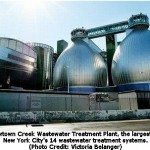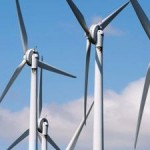Riverside, California – Black carbon aerosols and tropospheric ozone, both manmade pollutants emitted predominantly in the Northern Hemisphere’s low- to mid-latitudes, are most likely pushing the boundary of the tropics further poleward in that hemisphere, new research by a team of scientists shows.
While stratospheric ozone depletion has already been shown to be the primary driver of the expansion of the tropics in the Southern Hemisphere, the researchers are the first to report that black carbon and tropospheric ozone are the most likely primary drivers of the tropical expansion observed in the Northern Hemisphere.

Led by climatologist Robert J. Allen, an Assistant Professor of Earth Sciences at the University of California, Riverside, the research team notes that an unabated tropical belt expansion would impact large-scale atmospheric circulation, especially in the subtropics and mid-latitudes.
“If the tropics are moving poleward, then the subtropics will become even drier,” Allen said. “If a poleward displacement of the mid-latitude storm tracks also occurs, this will shift mid-latitude precipitation poleward, impacting regional agriculture, economy, and society.”
The study results appear in the May 17 issue of ‘Nature’.
Observations show that the tropics have widened by 0.7 degrees latitude per decade, with warming from greenhouse gases also contributing to the expansion in both hemispheres. To study this expansion, the researchers first compared observational data with simulated data from climate models for 1979-1999. The simulated data were generated by a collection of 20 climate models called the Coupled Model Intercomparison Project version 3 or “CMIP3”.
The researchers found that CMIP3 underestimates the observed 0.35 degrees latitude per decade expansion of the Northern Hemisphere tropics by about a third. But when they included either black carbon or tropospheric ozone or both in CMIP3, the simulations mimicked observations better, suggesting that the pollutants were playing a role in the Northern Hemisphere tropical expansion.
Next, to ensure that their results were not influenced by intrinsic differences between CMIP3’s 20 models, the researchers expanded the time period studied to 1970-2009, comparing available observed data with simulated data from NCAR’s Community Atmosphere Model (CMIP3 data did not extend to 1970-2009). They then repeated the exercise with the GFDL Atmospheric Model. Using these models allowed the researchers to directly isolate the effects of black carbon and tropospheric ozone on the location of the tropical boundaries.
As before, they found that the models underestimate the observed Northern Hemisphere expansion of the tropics by about a third. When black carbon and tropospheric ozone were incorporated in these models, however, the simulations showed better agreement with observations, underscoring the pollutants’ role in widening the tropical belt in the Northern Hemisphere.
“Both black carbon and tropospheric ozone warm the tropics by absorbing solar radiation,” Allen explained. “Because they are short-lived pollutants, with lifetimes of one-two weeks, their concentrations remain highest near the sources: the Northern Hemisphere low- to mid-latitudes. It’s the heating of the mid-latitudes that pushes the boundaries of the tropics poleward.”
Allen further explained that with an expansion of the tropics, wind patterns also move poleward, dragging other aspects of atmospheric circulation with them, such as precipitation.
“For example, the southern portions of the United States may get drier if the storm systems move further north than they were 30 years ago,” he said. “Indeed, some climate models have been showing a steady drying of the subtropics, accompanied by an increase in precipitation in higher mid-latitudes. The expansion of the tropical belt that we attribute to black carbon and tropospheric ozone in our work is consistent with the poleward displacement of precipitation seen in these models.”
Black carbon aerosols are tiny particles of carbon produced from biomass burning and incomplete combustion of fossil fuels. Most of the world’s black carbon production occurs in the Northern Hemisphere, with Southeast Asia being a major producer. The same is true of tropospheric ozone, a secondary pollutant that results when volatile organic compounds react with sunlight.
“Greenhouse gases do contribute to the tropical expansion in the Northern Hemisphere,” Allen said. “But our work shows that black carbon and tropospheric ozone are the main drivers here. We need to implement more stringent policies to curtail their emissions, which would not only help mitigate global warming and improve human health, but could also lessen the regional impacts of changes in large-scale atmospheric circulation in the Northern Hemisphere.”
Thomas Reichler, an Associate Professor of Atmospheric Sciences at the University of Utah, noted that the new work by the Allen-led team represents a major advance in climate dynamics research.














